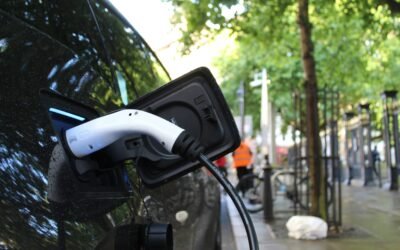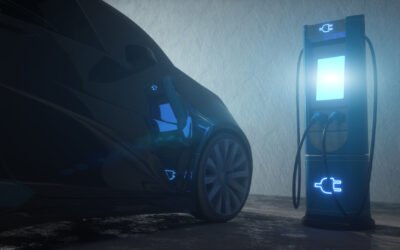- Battery-buffered EV charging is an innovative approach that integrates electric vehicle (EV) charging stations with energy storage systems, typically in the form of large-scale batteries.
- Incorporating battery-buffered EV charging into electrical systems has several benefits, such as reduced infrastructure upgrade requirements, grid stability, low-cost charging, enhanced resilience, and environmental benefits.
- Battery-buffered EV charging systems are crucial in densely populated urban areas, regions with a high penetration of renewable energy sources, and areas prone to extreme weather events.
Battery-buffered EV charging is an innovative approach that integrates electric vehicle (EV) charging stations with energy storage systems, typically in the form of large-scale batteries. This synchronized pairing of EV charging and battery storage offers several significant advantages, including grid stability, cost savings, and improved resilience. This article will explore the usage and benefits of integrating battery storage systems with EV charging stations, as well as discuss where and when such systems are most needed while examining the factors contributing to the growth of this vital infrastructure.
Battery-buffered EV charging involves two primary components: EV charging stations and energy storage systems, typically lithium-ion batteries. These batteries store excess electricity when it is abundant and inexpensive, often during off-peak hours or when renewable energy sources like wind or solar produce surplus power. When EV owners plug in their vehicles for charging, the stored energy is discharged to provide power, reducing the strain on the grid during peak usage times. This ensures a steady and reliable power supply for EV charging and helps balance the grid by reducing spikes in demand.
Benefits of Battery-buffered EV Charging
Incorporating battery-buffered EV charging into electrical systems has several benefits, such as reduced infrastructure upgrade requirements, grid stability, low-cost charging, enhanced resilience, and environmental benefits.
Reduced Infrastructure Upgrades
Battery-buffered EV charging systems can help avoid or postpone costly upgrades to the electrical grid. By storing excess electricity and releasing it during peak demand, these systems reduce the strain on the grid, potentially delaying the need for extensive infrastructure improvements, such as constructing new power lines or substations.
Grid Stability
One of the primary benefits is enhanced grid stability. By mitigating sudden surges in electricity demand caused by multiple EVs charging simultaneously, these systems help prevent grid failures and brownouts.
Low Cost
Battery-buffered charging allows utilities and EV owners to take advantage of lower electricity prices during off-peak hours, ultimately reducing the overall cost of charging. Additionally, it can serve as a source of revenue from grid services through participation in demand response programs.
Resilient Infrastructure
In cases of power outages or emergencies, battery storage systems can serve as backup power sources, providing electricity not only for EV charging but also for essential services and homes, increasing overall resilience in communities.
Environmental Benefits
Battery-buffered charging can enhance the environmental benefits of electric vehicles. Using stored electricity from renewable sources for charging reduces the carbon footprint associated with EVs, making them even more eco-friendly while supporting sustainability goals.

Figure 1: The Process of Battery-buffered EV Charging.
Source: Greenway
Use Case of Battery-Buffered EV Charging
Battery-buffered EV charging systems are crucial in densely populated urban areas, where many EVs are expected to charge simultaneously, potentially straining the local grid. They are also beneficial in regions with a high penetration of renewable energy sources, as they can store excess clean energy for later use. Additionally, these systems are valuable in areas prone to extreme weather events or with unreliable power infrastructure, where backup power is essential during emergencies.
Moreover, these are particularly essential in locations that are far away from major cities, where grid capacity may not be sufficient, or grid connections are underpowered, especially when setting up high-powered charging stations.
In areas far from urban centers, where the population density is lower and electric vehicle adoption may grow steadily, the existing electrical grid infrastructure might not be equipped to handle the increase in demand for EV charging. Battery-buffered EV charging systems become important in such locations to bridge the gap between demand and grid capacity. These systems can store electricity during periods of low demand and release it when EVs need to charge, ensuring a smooth and reliable charging experience without overloading the grid. This is especially vital for supporting the expansion of EV charging networks in rural and less densely populated regions.
High-powered EV charging stations, such as DC fast chargers, require significant electrical grid capacity to deliver rapid charging to multiple vehicles simultaneously. Battery-buffered EV charging systems serve as a critical solution in locations where grid connections are underpowered or inadequate to support such charging stations. These systems can provide the necessary power for high-speed charging without requiring costly grid upgrades. As a result, they enable the deployment of fast-charging infrastructure along highways, in remote areas, and at rest stops, expanding the reach of electric vehicles and making long-distance travel more feasible.
There are multiple manufacturers which offer battery integrated charging solutions which include FreeWire, Ads Tec Energy and Nerve Smart Systems etc.

Figure 2: List of Available Battery Integrated Charging Solutions.
Source: PTR Inc.
Looking Forward
Battery-buffered EV charging is a promising solution to address the challenges associated with the growing demand for electric vehicle charging. Combining energy storage systems with EV charging infrastructure not only enhances grid stability and resilience but also contributes to cost savings and supports the integration of renewable energy sources. The continued growth of this infrastructure is expected as EV adoption rises, renewable energy becomes more prevalent, and the need for a more reliable and sustainable energy ecosystem becomes increasingly apparent. Many utilities and governments are investing in grid modernization efforts, including the deployment of smart grids, which can benefit from the flexibility and stability offered by battery-buffered EV charging. Governments and regulatory bodies also often offer incentives and subsidies to encourage the deployment of energy storage systems and support the growth of sustainable transportation, which will, in turn, drive demand for battery-buffered EV charging infrastructure.
EV Charging Infrastructure Service Overview
The research presented in this article is from PTR's EV Charging Infrastructure market research. For information about this service please submit a request shown below.
Contact Sales:
Europe
+49-89-12250950
Americas
+1 408-604-0522
Japan
+81-80-7808-1378
GCC/Rest of APAC
+971-58-1602441
More about our:
EV Charging Infrastructure Market Research
Recent Insights
Exploring the European EVCI Services Market Key Players and Emerging Trends
There has been a significant surge in the development of EVCI due to the widespread adoption of EVs in Europe. By 2030, it is expected that Europe...
Nordics EVCI Market Comparison: Quarterly Growth and Market Dynamics – 2024
This infographic examines the ambitious policies and regional targets that are propelling the growth of Electric Vehicle Charging Infrastructure...
Electrifying Future: Emerging Trends and Strategic Targets in the Middle East
This infographic presents an overview of the burgeoning electric vehicle (EV) market in the Middle East. It highlights the region's ambitious...


